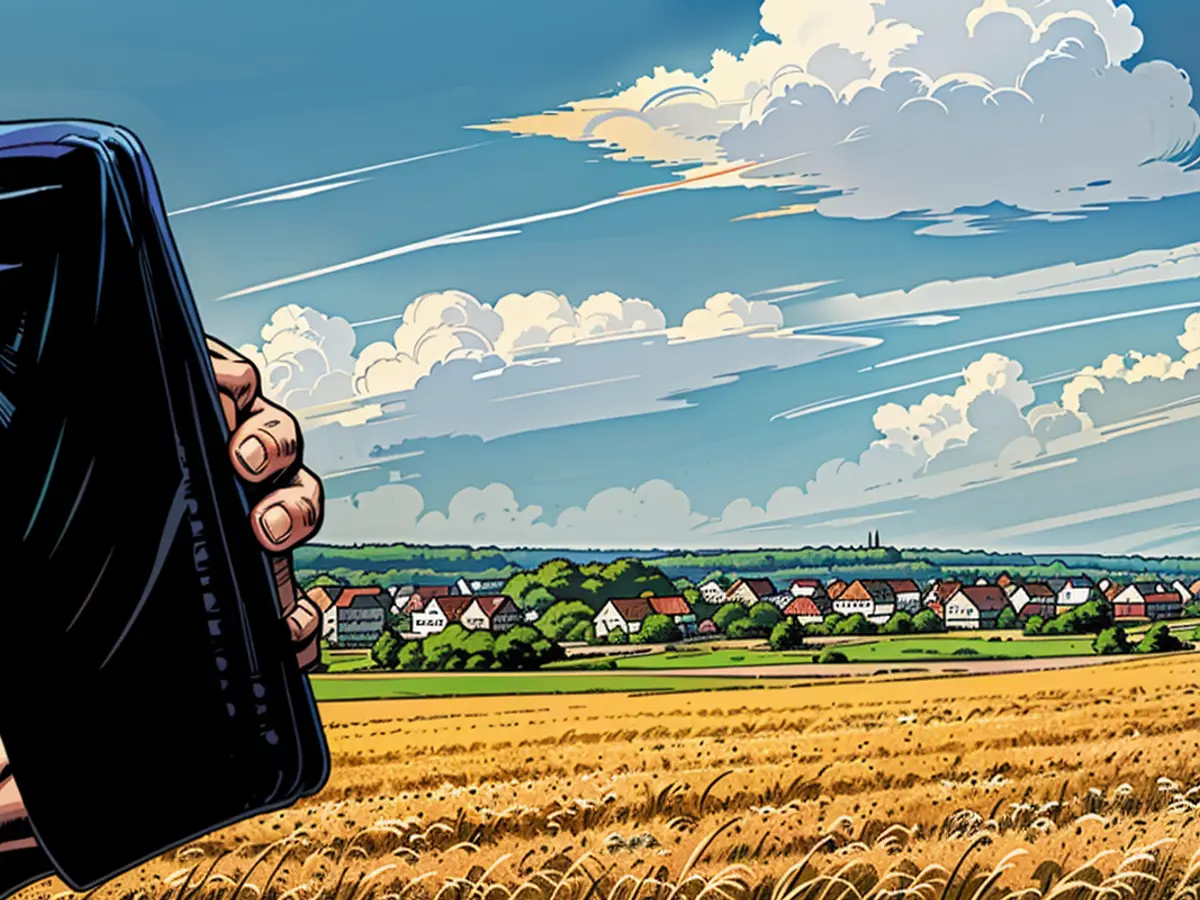- The application revitalizes the essence of rural living.
In numerous tiny towns scattered across Lower Saxony, traditional watering holes and supermarkets have gradually vanished, leaving an emptiness that the internet has stepped in to fill as a means of communication. The "Digital Villages of Lower Saxony" initiative serves as a hub for residents, offering features such as classified ads, sales notices, and interaction with local government. The core of this project is the "DorfFunk" app, which enables neighbors to offer aid, submit requests, or engage in conversation through their smartphones.
Carola Croll, the project's scientific director, stated, "Folks adore the app. You can find just about anything on it." For instance, one family once sought advice from the village on how to remove a wasp nest from their loft and enlisted help. Various groups have also sprung up, such as jogging buddies with their canine companions or parents of twins.
Users can interact directly with the municipality via the "Tell us" channel, making suggestions or reporting issues, such as faulty streetlights or a wobbly climbing frame in the playground.
As of now, the platform has over 59,000 users across the state.
The first digital village, the municipality of Gleichen in the Göttingen district, was initiated in 2020 with funding from the Federal Ministry of Agriculture. Originally launched in four southern Lower Saxony districts during the COVID-19 period, the project now extends to municipalities throughout the state. Alongside the "DorfFunk" app, the project includes the "LandNews" information portal and can integrate municipal websites.
By July 15, 2024, 1,194 villages had been designated as "Digital Villages" across Lower Saxony, with over 63,800 registered users.
Communities eligible for this program can apply to become model villages. Holle in the Hildesheim district recently received this recognition. Mayor Falk-Olaf Hoppe commended the "DorfFunk" app specifically. "The app has significantly improved life in our rural communities," he said, noting an increase in community communication and a stronger sense of connection among residents.
The app proved particularly beneficial during the Christmas floods, according to Hoppe. The local fire department utilized the "DorfFunk" app to disseminate information about the flood situation, road closures, and their activities. Volunteers also employed the app to offer assistance, such as filling sandbags.
The "Digital Villages of Lower Saxony" project is a joint venture between the Stiftung Digitale Chancen and the Fraunhofer Institute for Experimental Software Engineering (IESE). It is funded by the Lower Saxony Ministry of Europe. According to Croll, similar projects exist in other federal states, but the village communities in Lower Saxony are remarkably active.
The transition from physical establishments to digital communication in rural areas is evident, as traditional watering holes and supermarkets in Lower Saxon villages are replaced by the internet. This shift is reflected in the popularity of the "DorfFunk" app, where Carola Croll mentioned that residents can find almost anything they need.
Furthermore, the village life in Lower Saxony is now significantly enriched by digital platforms, as demonstrated by Mayor Falk-Olaf Hoppe's appreciation for the "DorfFunk" app, which he believes has improved life in Holle, a model 'Digital Village'.








